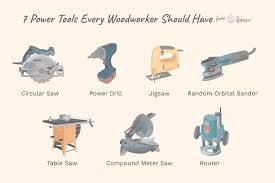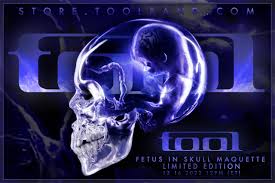Mastering Your Craft: Essential Tools for Success
The Essential Tools for Every Task
Tools are the backbone of any successful endeavour, whether it’s a DIY project, a professional task, or a creative pursuit. Having the right tools at your disposal can make all the difference in achieving your goals efficiently and effectively.
Hand Tools
Hand tools are essential for tasks that require precision and manual dexterity. A basic set of hand tools typically includes screwdrivers, pliers, hammers, wrenches, and tape measures. These tools are versatile and can be used for a wide range of projects.
Power Tools
Power tools are indispensable for tasks that require speed and power. From drills and saws to sanders and grinders, power tools can help you tackle larger projects with ease. Investing in high-quality power tools can save you time and effort in the long run.
Software Tools
In today’s digital age, software tools play a crucial role in various fields such as design, development, data analysis, and more. Whether it’s graphic design software like Adobe Photoshop, coding platforms like Visual Studio Code, or project management tools like Trello, having the right software tools can streamline your work processes.
Gardening Tools
For outdoor tasks like gardening and landscaping, having the right gardening tools is essential. From shovels and rakes to pruning shears and watering cans, these tools help you maintain your outdoor spaces and keep them looking beautiful all year round.
Kitchen Tools
Cooking is an art that requires precision and skill, which is why having the right kitchen tools is essential. Knives, cutting boards, pots and pans, measuring cups – these kitchen essentials help you prepare delicious meals with ease.
Whether you’re a DIY enthusiast, a professional tradesperson, or a creative professional, having the right tools can make your tasks easier and more enjoyable. Invest in quality tools that suit your needs and watch how they enhance your productivity and efficiency.
Essential Tips for Safe and Effective Tool Use: Maintenance, Safety, and Performance
- Always wear appropriate safety gear when using tools.
- Keep your tools clean and well-maintained for optimal performance.
- Use the right tool for the job to avoid damaging materials or injuring yourself.
- Store your tools in a dry place to prevent rust and corrosion.
- Follow the manufacturer’s instructions for proper tool usage.
- Inspect your tools before each use to ensure they are in good condition.
- Learn how to properly sharpen cutting tools for better results.
- Invest in quality tools that will last longer and perform better.
Always wear appropriate safety gear when using tools.
It is crucial to always wear appropriate safety gear when using tools. Whether you are working with hand tools, power tools, or any other type of equipment, safety should be a top priority. Wearing protective gear such as goggles, gloves, ear protection, and helmets can help prevent accidents and injuries while working on tasks. By prioritising safety and wearing the necessary protective equipment, you can ensure a safe working environment and minimise the risk of harm to yourself or others. Remember, safety first when it comes to using tools.
Keep your tools clean and well-maintained for optimal performance.
It is essential to keep your tools clean and well-maintained to ensure optimal performance and longevity. Regular cleaning helps prevent rust, corrosion, and build-up that can affect the functionality of your tools. Proper maintenance, such as lubricating moving parts and sharpening blades, not only enhances performance but also extends the lifespan of your tools. By taking care of your tools, you can work more efficiently and effectively, saving time and effort in the long run.
Use the right tool for the job to avoid damaging materials or injuring yourself.
Using the appropriate tool for a task is crucial to prevent damage to materials and ensure personal safety. Selecting the right tool not only enhances efficiency but also minimises the risk of accidents or injuries. By matching the tool to the job at hand, you can work more effectively, achieve better results, and maintain a safe working environment. Remember, investing time in choosing the correct tool upfront can save you from costly mistakes and potential harm in the long run.
Store your tools in a dry place to prevent rust and corrosion.
It is important to store your tools in a dry place to prevent rust and corrosion. Moisture can cause metal tools to rust over time, leading to deterioration and reduced effectiveness. By keeping your tools in a dry environment, such as a toolbox or a designated storage area, you can prolong their lifespan and ensure they remain in good working condition for future use. Proper storage not only protects your tools but also saves you time and money by avoiding the need for frequent replacements.
Follow the manufacturer’s instructions for proper tool usage.
It is crucial to follow the manufacturer’s instructions for proper tool usage to ensure safety, efficiency, and longevity of the tools. By adhering to the guidelines provided by the manufacturer, users can prevent accidents, maintain the performance of the tools, and maximise their functionality. Ignoring or deviating from these instructions can not only compromise the quality of work but also pose a risk to personal safety. Therefore, it is essential to read and understand the recommended usage guidelines before operating any tool to make the most out of its capabilities while prioritising safety.
Inspect your tools before each use to ensure they are in good condition.
It is crucial to inspect your tools before each use to ensure they are in good condition. Regular inspection can help you identify any signs of wear, damage, or malfunction that may compromise the safety and effectiveness of the tool. By taking the time to check your tools before starting a task, you can prevent accidents, extend the lifespan of your equipment, and maintain optimal performance. Remember, a well-maintained tool not only enhances your work quality but also ensures a safer working environment for yourself and others.
Learn how to properly sharpen cutting tools for better results.
To achieve optimal performance and precision in your cutting tasks, it is essential to master the art of sharpening cutting tools. Properly sharpened tools not only ensure clean and accurate cuts but also prolong the lifespan of your equipment. By honing your sharpening skills and maintaining sharp cutting edges, you can enhance the efficiency and quality of your work, resulting in better outcomes across various projects. Remember, a sharp tool is a safe tool – invest time in learning how to sharpen your cutting tools effectively for improved results.
Invest in quality tools that will last longer and perform better.
When it comes to tools, investing in quality equipment can make a significant difference in the outcome of your tasks. Quality tools not only last longer but also perform better, ensuring that you can work efficiently and effectively. By choosing durable and reliable tools, you are making a long-term investment in your projects, saving time and effort in the process. Prioritising quality over quantity when it comes to tools is a wise decision that can ultimately lead to better results and a more satisfying work experience.




